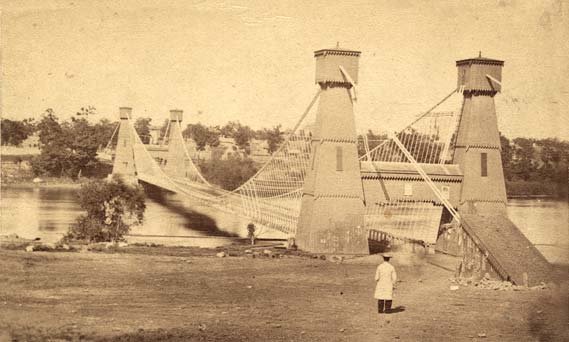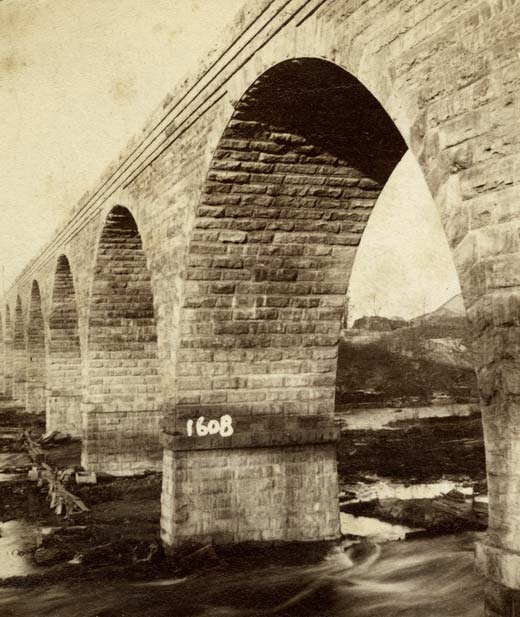Minneapolis Riverfront
For centuries, the Minneapolis riverfront has endured as a place of cultural significance for many different people.
The story of Minneapolis begins with St. Anthony Falls, the only major waterfall on the Mississippi River. The falls has been a gathering place for many different people, for many different reasons, for thousands of years.
Located in Dakota homeland, Owamniyomni (St. Anthony Falls) was a place of spiritual power and a gathering place for resources like the sugar maples on Nicollet Island and nearby springs. The Dakota name for the river, Haha Wakpa (Mississippi), means “river of the falls.” Owamniyomni is part of a larger landscape — Bdote, the confluence of the Mni Sota Wakpa (Minnesota) and Haha Wakpa (Mississippi) rivers — is a place of cultural importance to many Dakota people as a site of creation, as well as a historical gathering place.
The falls were given the name St. Anthony Falls by Father Louis Hennepin, who came to the area in 1680. The Europeans and Americans who followed prized the falls as a place of beauty and a source of waterpower for industry.
In 1805, Zebulon Pike made an agreement with several Dakota representatives to acquire land for a military fort at Bdote. The Fort Snelling military reservation also included the land at St. Anthony Falls. The first sawmill and gristmill were built by Fort Snelling soldiers in the 1820s.
By the 1850s the falls were harnessed as a source of power for the commercial lumber and flour milling industries, and the riverfront settlement transformed into a city that led the world in flour production for nearly 50 years, beginning in 1880. Later, changes in transportation and industry led to a move away from the river, and as business departed, the area declined.
Today, the Minneapolis riverfront has been revitalized. It's a place where visitors enjoy sightseeing, walking and biking trails, dining, live music, and theater. Many historic buildings have been developed for new uses, including the Washburn A Mill, which is now the home of Mill City Museum.
Related resources
- Stone Arch Bridge
MNopedia
A feat of engineering and a reminder of the importance of rail traffic in the late 19th century. - St. Anthony Falls Tunnel Collapse, 1869
MNopedia
On October 5, 1869, water seeped and then gushed into a tunnel underneath St. Anthony Falls creating an enormous whirlpool. The falls were nearly destroyed. It was years before the area was fully stabilized and the falls were again safe from collapse. - Father Louis Hennepin Suspension Bridge
MNopedia
The Father Louis Hennepin Bridge was built in 1855 to take advantage of the transport possibilities provided by the Mississippi River above St. Anthony Falls. It was the first bridge built to span the Mississippi River, and made crossing its length above the falls much easier. - Spiritual Power to Industrial Might: 12,000 Years at St. Anthony Falls (PDF)
Minnesota History, Spring/Summer 2003
Focuses on early accounts of the natural river through human-engineered changes. - Archaeology on the Minneapolis Riverfront: Finding the Invisible Historic Sites at St. Anthony Falls (PDF)
Minnesota History, Spring/Summer 2003
Concentrates on the history of archaeology at the Washburn A Mill site. - At Home in the Heart of the City (PDF)
Minnesota History, Spring/Summer 2003
Features the changing neighborhood and residents of the milling district throughout the years.

Minneapolis has more bridges across the Mississippi River than any other community. It's also the site of the first bridge across the Mississippi, which opened in 1855 and connected Nicollet Island to what is now the downtown side of the Mississippi at Hennepin Avenue, combined with an 1853 bridge from Nicollet Island to the other side of the river.

The Stone Arch bridge.
From MNHS Press
- Mni Sota Makoce: The Land of the Dakota
An intricate narrative of the Dakota people over the centuries in their traditional homelands, the stories behind the profound connections that hold true today. - Mill City: A Visual History of the Minneapolis Mill District
Dramatic first-person narratives and historic photographs bring to life the history of the Minneapolis riverfront, its industries, and its people. - Falls of St. Anthony: The Waterfall that Built Minneapolis
The Mississippi's major waterfall played an important role in the development of lumbering, flour milling, and hydroelectric power in Minneapolis. This revised edition contains more than 50 photographs and a new epilogue by the author describing the commercial development along the waterfront since the 1960s.
Other publications about the Mill District and Minneapolis
- Lost Twin Cities
- Twin Cities Then & Now
- Minneapolis in the Twentieth Century: The Growth of an American City
St. Anthony Falls Heritage Board
- The St. Anthony Falls Heritage Board has commissioned numerous reports exploring various aspects of history in the St. Anthony Falls Heritage Zone.

